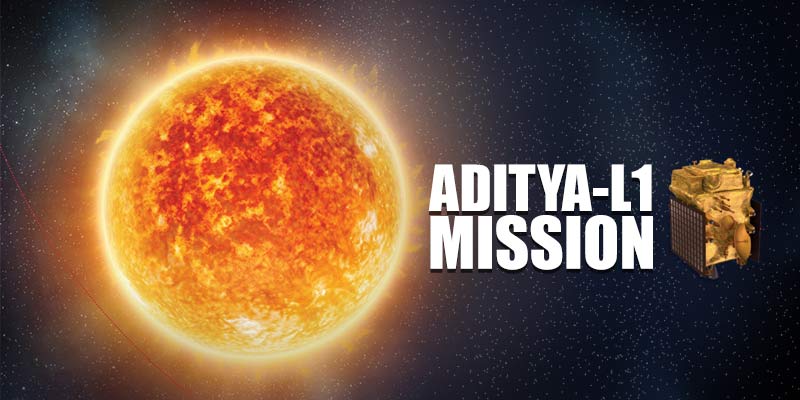- India
- Feb 24
Aditya-L1 detects impact of coronal mass ejections on solar wind
• Aditya-L1 spacecraft is designed for providing remote observations of the solar corona and in-situ observations of the solar wind at L1 (Sun-Earth Lagrangian point), which is about 1.5 million kilometres from the Earth.
• Advanced sensors of a payload aboard Aditya-L1 have successfully detected the impact of coronal mass ejections (CMEs).
• The payload — Plasma Analyser Package for Aditya (PAPA) — is an energy and mass analyser designed for in-situ measurements of solar wind electrons and ions in the low energy range.
It has two sensors:
i) The Solar Wind Electron Energy Probe (SWEEP) - measures electrons in the energy range of 10 eV to 3 keV.
ii) The Solar Wind Ion Composition Analyser (SWICAR) - measuring ions in the energy range of 10 eV to 25 keV and mass range of 1-60 amu.
• The sensors are also equipped to measure the direction of arrival of solar wind particles.
• The data collected by PAPA, developed by the Space Physics Laboratory and Avionics Entity of the Vikram Sarabhai Space Centre, revealed the occurrence of CME events, notably on December 15, 2023, and during February 10-11, 2024. The CME on December 15 was a single event.
• In contrast, the observed variations in electron and ion counts during February 10-11, 2024, are the result of multiple minor events, with differences in the time variations of electrons and ions.
• The SWEEP and SWICAR sensors on PAPA-Aditya-L1 are currently making continuous observations of solar wind electrons and ions in the default mode, demonstrating that they are performing as per the design in all modes of operations.
• Aditya-L1 is the first space based observatory class Indian solar mission to study the Sun.
What is solar wind?
• The solar wind is a continuous stream of particles — mainly protons and electrons in a state known as a plasma — flowing outward from the Sun. High speed solar winds bring geomagnetic storms while slow speed winds bring calm space weather. Forecasting the solar wind is critical to developing forecasts of space weather and its impacts on the Earth.
Coronal mass ejections
• A coronal mass ejection (CME) is an eruption of around a billion tonnes of particles that comes from the solar atmosphere — the corona — and travels through the solar system.
• CMEs are an important part of ‘space weather’. The particles spark aurorae on planets with atmospheres, and can cause malfunctions in some technology. They can also be harmful to unprotected astronauts.
• CMEs often occur along with solar flares (explosions on the Sun’s surface), but they can also occur spontaneously.
• The Sun can eject matter in any direction, so only some of the CMEs will actually encounter Earth.
• Their magnetic fields merge between the interplanetary magnetic field (IMF) and geomagnetic field lines. This direct link between even a small percentage of the geomagnetic field lines and the IMF results in large increases in the rate of energy transfer from the solar wind and the magnetosphere.
• Because of this, CMEs are among the most important drivers of geomagnetic storms and substorms. These substorms cause the beautiful northern and southern auroral light that often are seen in the night sky at high latitudes.
What is solar flare?
• Solar flare is a sudden brightening observed over the Sun’s surface, which is interpreted as a large energy release. Flares are mainly followed by mass ejections from the solar atmosphere called coronal mass ejections. The flare ejects clouds of electrons, ions, and atoms through the corona of the Sun into space.
• Scientists classify solar flares according to their brightness in the X-ray wavelengths.
There are three categories:
i) X-class flares are big. They are major events that can trigger radio blackouts around the whole world and long-lasting radiation storms in the upper atmosphere.
ii) M-class flares are medium-sized. They generally cause brief radio blackouts that affect Earth’s polar regions. Minor radiation storms sometimes follow an M-class flare.
iii) C-class flares are small, compared to X and M-class events, with few noticeable consequences on Earth.
Manorama Yearbook app is now available on Google Play Store and iOS App Store

